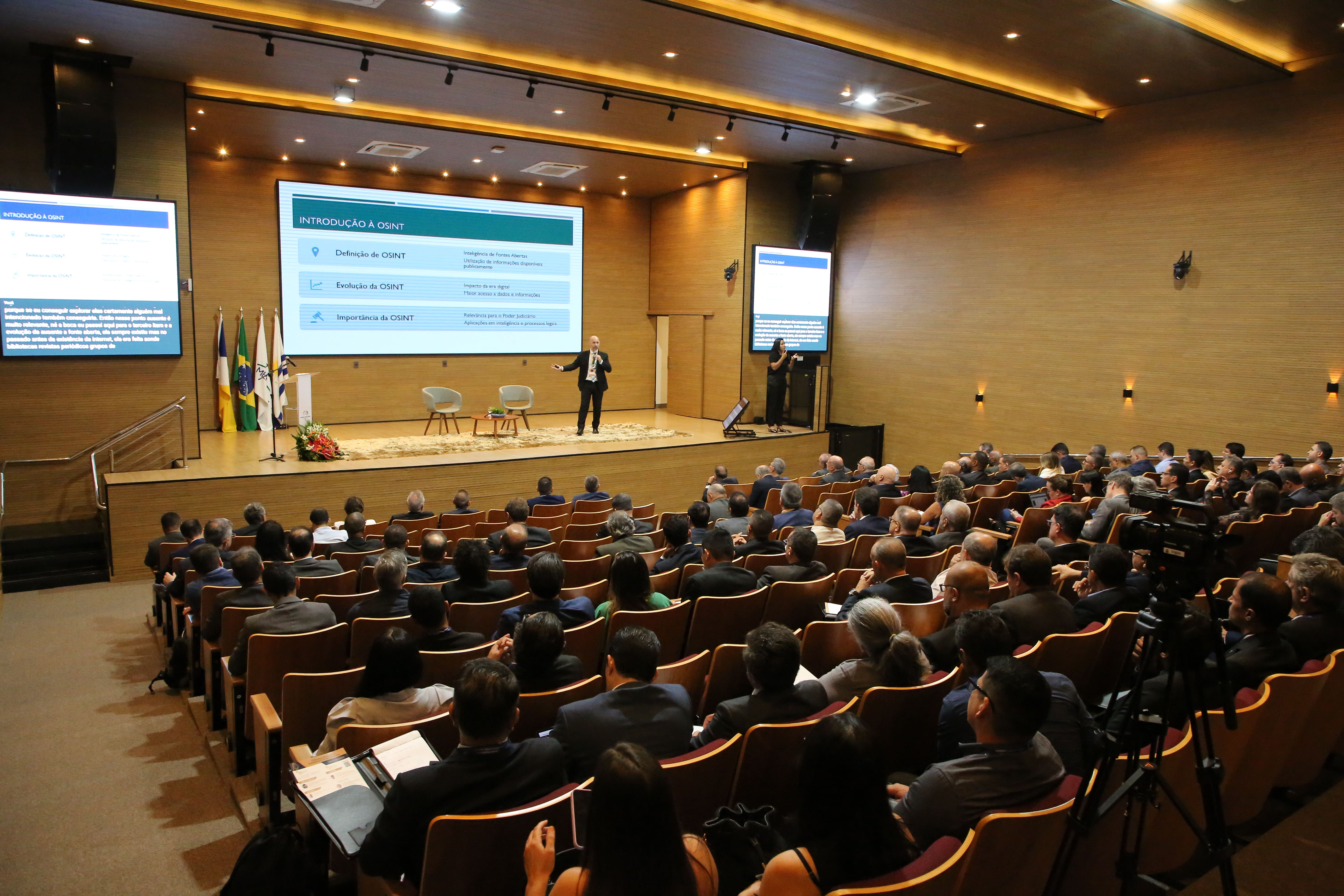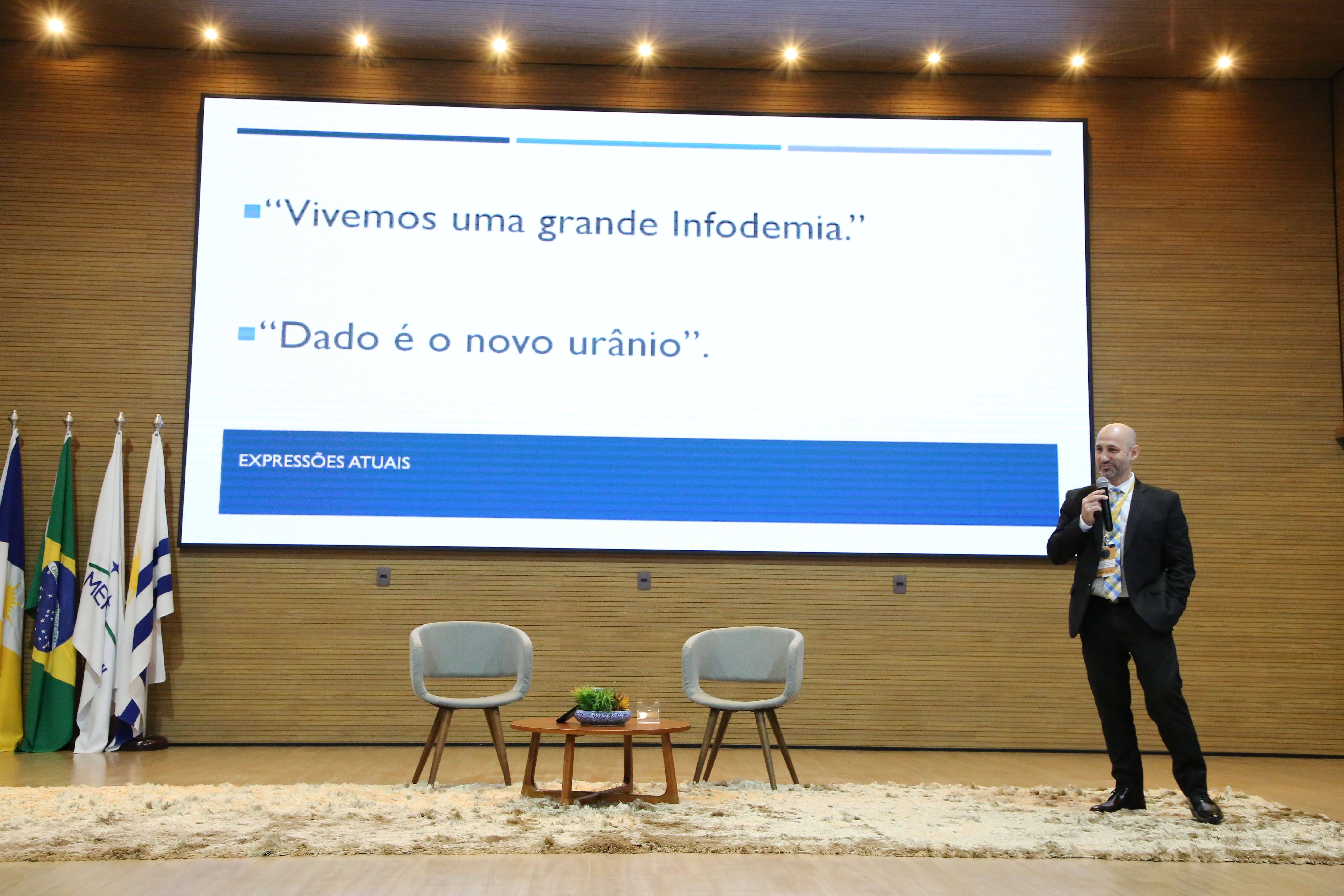
Does society understand the real power of OSINT, both as a protection tool and as a security risk? This is one of the reflections aroused by the lecture given by Marcos Felipe Pereira Gonçalves Gomes da Motta, Counterintelligence Superintendent of the Secretariat for Public Security of the State of Rio de Janeiro, during the morning programming of the VI National Meeting on Intelligence in the Judiciary.
But what does OSINT stand for anyway? The acronym comes from the English Open Source Intelligence. It is the process of collecting, analyzing and interpreting publicly available information, i.e. from sources accessible to any citizen.
As the speaker explained, in addition to produce knowledge, which is essential in many areas, in the field of public security, cross-referencing data obtained through open sources makes it possible to build relational maps, habits, places frequented and connections with other possible parties involved.
During his presentation, the superintendent made two provocative statements: we live in an infodemic and data is the new uranium - valuable, but highly dangerous. So how can we use the avalanche of information available on the internet in favor of public safety, when we can't even measure its quantity and impact?
“It's not out of our hands [to process the data properly]. It's obvious that the more specialists we are, the better the results will be. That's why training in this area is very important,” he said.
Addressing the information epidemic, he was direct: “There's so much information that we can't absorb it. So much contradictory information... we have difficulty defining which of them is correct. That's a big challenge we're facing”.
Social networks, especially platforms like Instagram and Twitter, were also at the center of the debate. In a provocative tone, the speaker questioned whether the ease of access to information is making us more informed or just more distracted.
Marcos aptly pointed out how these platforms can also be an ally for police, legal and institutional action. The sharing information in real time, he said, aids criminal investigations, helps confirm the authenticity of documents, identify fraud and ascertain additional data more quickly and accurately.
We have to know where we are vulnerable. There's no way. If you don't do this work, someone will discover this vulnerability for you, and perhaps use it for evil, not for good. OSINT, in the administrative area of the court, in the correctional area, can be applied very well. Everything you do online leaves an information footprint,” he warned.
Among the challenges pointed out, the superintendent highlighted the massive volume of data, the possibilities of disinformation and the lack of specific regulations for the use of intelligence in open sources.
The lecture, more than technical, was an invitation to awareness. After all, as the expert pointed out, understanding the power of open information is also a way of taking care of what is collective.
More information
The lecture was held on the morning of March 26th, in the auditorium of the Court of Justice of the State of Tocantins (TJTO). The event was attended by judges, civil servers from the justice system in different regions of Brazil, as well as specialists and authorities in the legal, intelligence and institutional security fields.
The meeting was organized by the TJTO, through the Center for Intelligence and Institutional Security (NIS), coordinated by Justice Jacqueline Adorno, in partnership with the Superior School of the Judges of the State of Tocantins (Esmat).
In line with the National Security Policy of the Judiciary - regulated by the Resolution No. 435 of the National Council of Justice (CNJ) of 2021 - the event is coordinated by Justice Pedro Nelson de Miranda Coutinho, the chief of Justice of the State.




